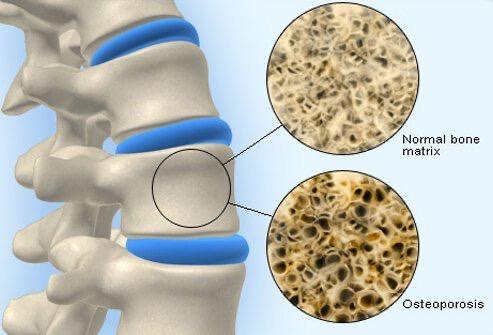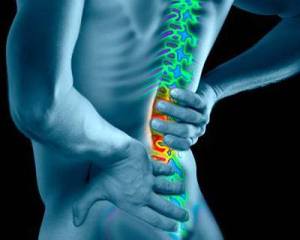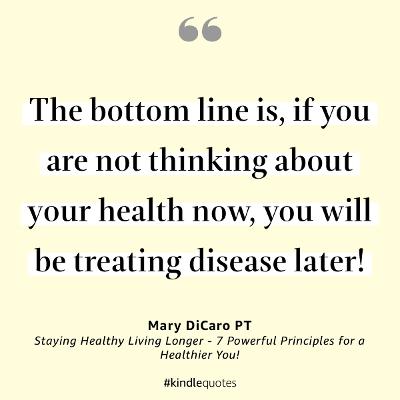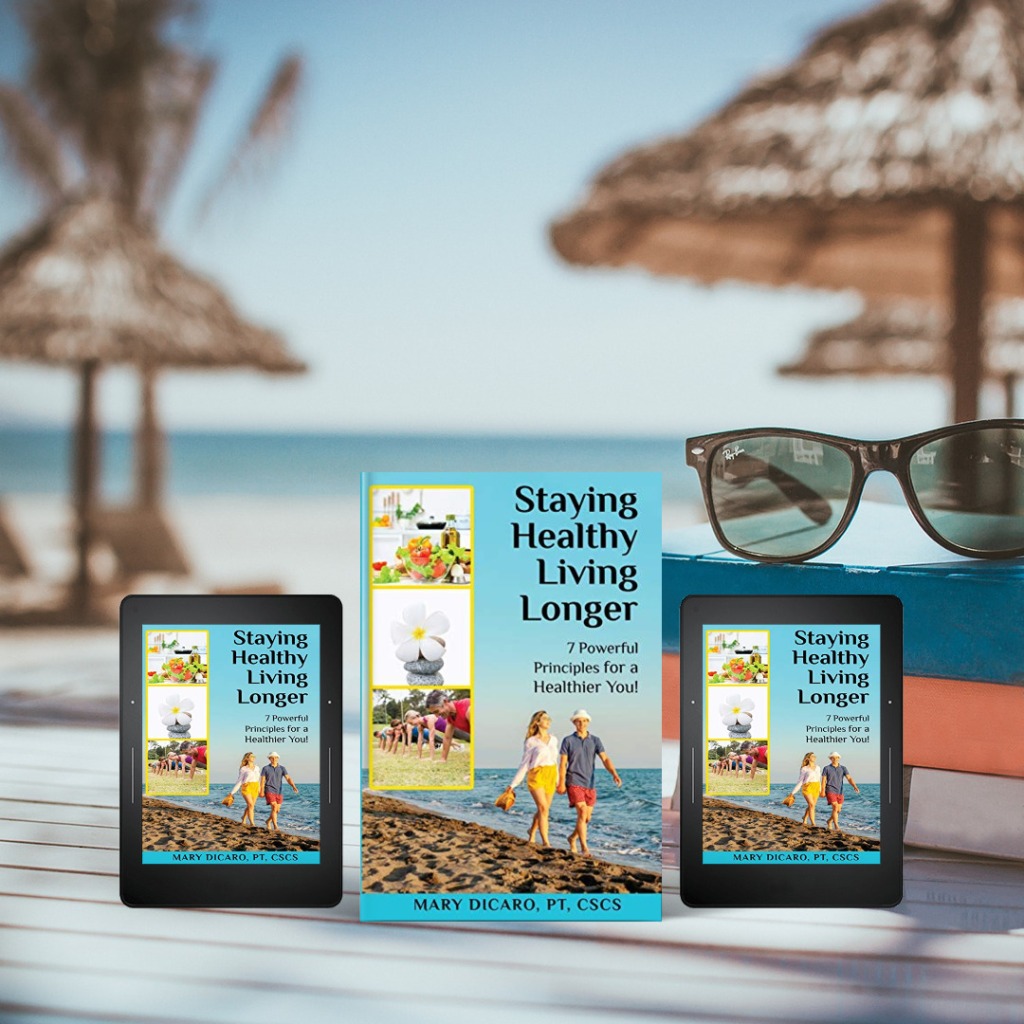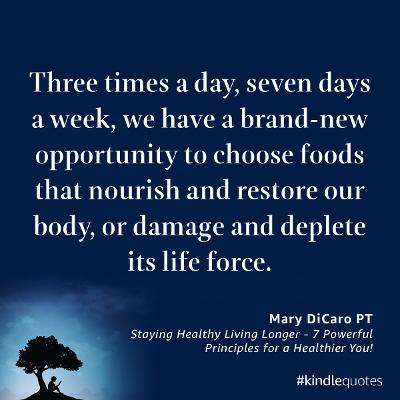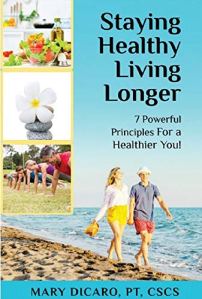Is there a formula that will increase your odds of strong healthy, fracture-resistant bones? How can you stay active and strong despite your chronological age? Is it possible to reverse muscle and bone loss and “age in reverse”? The answer to all of these questions is Yes!
As a physical therapist, I often see people for rehab ‘after’ they have sustained a hip, ankle, or wrist fracture. I see them after the diagnosis or the surgery. I often wish I had the opportunity to educate women ( and men) on the many factors that contribute to healthy and strong bones, joints, and muscles. The truth is it is much harder to recover from a fracture due to osteoporosis than it is to prevent one. It is far easier to prevent muscle loss, frailty, and falls if you take steps now.
The terms Osteopenia and Osteoporosis are simply medical labels given when a bone mineral density test or DEXA scan measures the quantity of bone and then categorizes the bone with a “T score”.
A T score of -2.5 or less ( more negative) is considered Osteoporosis, whereas a T score of -1.0 to -2.5 is considered osteopenia or “pre-osteoporosis.” Any score greater than -1.0 ( more positive) is considered normal. These scores are calculated by comparing your bones to that of a healthy 25 year old who is typically at the age of peak bone mass.
A T-score looks only at the quantity of bone present and does not measure or quantify the quality of bone. It may be surprising to learn that quantity of bone standing alone does not accurately determine the bone’s ability to resist fracture. In fact, it is the quality of bone that is a greater determining factor that most influences fracture tendency.
As I have said many times before these labels do not always provide an accurate representation of what a person’s actual fracture risk is or the likelihood of sustaining a fracture in the future. They will often instill unnecessary fear persuading people to take drugs that may or may not result in bones that are truly stronger and fracture resistant. I will not dive too deeply into the drug options for Osteoporosis but will only briefly discuss the current evidence.
The class of older drugs called Bisphosphonates, namely Fosamax, Boniva, Reclast, and Actonel prevent the breakdown of older bone. Normally, the older bone is less resilient and more fracture-prone, therefore the body will remove it and replace it with newer bone. Bone is living tissue and like all cells is replaced and cleared away routinely to make room for the new. By halting older bone breakdown the bone density will increase on a scan. Recall that bone density tests measure quantity, not quality of bone, and quality is an important factor in healthy, fracture-resistant bone.
The newer classification of “anabolic” drugs tricks the body into building new bone. These drugs Forteo, Tymlos, and Evenity, will temporarily increase bone density, however, all gains are lost when these drugs are stopped. They can only be taken for up to 2 years due to significant side effects. ( bone cancer and cardiovascular risks).
It may surprise you to know that many people with low-impact fractures are not in the osteoporotic density range but rather in the ‘normal’ bone density range.
Therefore, whenever I have the opportunity, I try to share basic knowledge of what the T-score means and what the critical factors are for maintaining and restoring healthy bone quantity and quality. I would like to present that the best options are not always drugs but rather, lifestyle changes that will have beneficial and lasting effects on bone density and overall health.
Since I have written at great length in previous blogs ( https://wordpress.com/block-editor/post/madicaro.wordpress.com/1236, and https://wordpress.com/block-editor/post/madicaro.wordpress.com/1257) and I have covered these factors extensively in my book, Staying Healthy Living Longer, I will only provide a basic review here.
Building Strong bones must begin early in life, however, it is never too late to reverse a trend of bone loss. Like most other diseases or disorders, frailty and bone loss are multi-factorial and these factors can be anything from heredity to lifestyle, diet, stress, medications, activity level, and toxins. What impacts the body as a whole will impact the bones. Systemic or body-wide inflammation has a damaging effect on all cells and systems of the body from the heart to the bones. This is why I stress the need to control systemic inflammation, as it is the primary driver of disease.
“Osteoporosis is another example of a disease of Inflammation and Oxidative damage. Inflammation is the driving force of bone breakdown and promotes the onset of Osteopenia and Osteoporosis.”-Staying Healthy, Living Longer-7 Powerful Principles for a Healthier You!
Before I discuss how we can build a healthier bone structure, I want to first emphasize that Health Care is Self Care.
Is it our annual doctor visits and the faithful refilling of pharmaceutical medications that insures us a disease-free life with healthy vitality? The correct answer of course is No! Our current health care model is not supportive of true health and has sadly regressed into a sick care system. Essentially, you wait for the symptoms to appear, then a pill or surgery is recommended to “fix” the problem.
There are, of course, exceptions as there are some novel drugs and surgical procedures that are truly life-saving and curative. Sadly, the vast majority of these drugs and interventions for chronic conditions will not provide you with better health any more than eating donuts will eliminate your sugar craving! Oftentimes, they leave new symptoms or imbalances in their wake. I believe there is a better way!
There is little to no attention or education provided on the underlying causes, prevention, or early interventions for many common conditions. I find this very frustrating. I see this play out time and time again with regard to bone health, and many other chronic diseases. If you intervene early on and proactively work toward building health as a daily mission, it will be less likely that you will need to treat disease later!
When I say Health care is Self-care I am implying that the seemingly insignificant choices we make, minute to minute and day to day, create a movement toward the healthy building, healing, and restoration of our body cells, or the opposite…deterioration. These choices require ongoing, intentional acts of self-love and self-care. These simple choices like compounding interest in our bank account have a profound impact on our long-term health. Little by little, a little becomes a lot!
We have to set ourselves up for success by adopting the habits or behaviors that reflect our desire to live our best life. That means that on a daily basis you pay attention to what you need to thrive.
I recommend starting with these 5 Foundational Pillars of Health.
1. Nutrients. Eating a nutrient-dense, whole food diet that supplies all micronutrients and minerals and reduces body-wide inflammation is critical. I cannot overstate that food is vital information for all of our cells. Food can either turn on genes that increase disease or turn them off. The constituents of the food we eat provide necessary information to activate aging pathways or promote regeneration, cellular repair, and health. Your bones are active living cells, just like your muscle and brain. They require specific and diverse nutrients in various quantities to clear away the old cells and rebuild healthy cells. This goes on every second of every day in an amazing interplay, all while you are unaware. Doesn’t that make you want to feed your cells what they need?
2. Exercise, This should include strength training, weight-bearing or skeletal loading exercise, cardiovascular, flexibility, and balance activities in a fun and sustainable way. Our bodies were made to move.
3. Stress management/Resiliency: This can be achieved through meditation, spiritual practices, breathwork, journaling, spending time in nature, engaging in comedic, artistic, or creative pursuits. These activities are associated with lower cortisol and stress hormone levels, decreased inflammatory markers, improved heart rate variability, reduced muscular tension, decreased insulin resistance, ( better insulin sensitivity and glucose tolerance), and reduced blood pressure. Elevated stress hormones like Cortisol, interfere with bone-building cells called Osteoblasts and will result in loss of bone mass. I guess you could say, stress is bad to the bone!
4. Sleep. Striving for 7-8 hours of quality sleep per night. This is when your body is able to heal, restore and rebuild. Sleep is elusive for many but is also undervalued as a primary pillar of a healthy body and brain.
5. Supplementation. It is nearly impossible to obtain optimal levels of certain nutrients from diet alone, even if your diet is healthy. There are many reasons for this. Minimum daily requirements of a nutrient are the bare minimum that is needed to prevent disease. It does not consider individual differences in gurt health, absorption, age, genetic tendencies, current health status, medications taken, and many other factors.
These 5 pillars are proven evidence-based interventions that focus on the factors that are within our control. They are cheap, have no negative side effects, and provide us with a wide range of benefits! Try to match that in a pill! These are also the key factors that optimize bone health and ensure that you can remain active in participating in the life you love. I discuss all of these and a few more in great detail in my book.
I believe we are on the precipice of understanding and reversing disease processes. It is an exciting time of discovering how components naturally present in foods can not only prevent diseases of aging but also reverse them! I love learning and sharing these discoveries.
Since many people ask what the best supplements are for building healthy bone I have included a few recommendations.
**It is recommended that you check with your doctor or licensed health practitioner before starting any new supplementation program, especially if you are on prescribed medications. **
There is a whole symphony of essential nutrients that are required for building healthy bones. There are many excellent bone-building products available. Any supplement you decide on should be pure, preferably with minimal additives or binders, and be third-party tested.
There are 10 nutrients that have been studied for building healthy bones and reducing inflammation. They are best taken together with a healthy diet. This is of course, in addition to the other Pillars discussed.
The products I recommend can be found under Protocols for Osteoporosis on my Fullscript dispensary page. Many of the products have all of these nutrients in the correct combinations so you don’t have to take them individually. These are suggestions only and I provide a variety of options. Some products have all or most of these 10 nutrients contained and some have only a few but have other beneficial compounds.
- Vitamin D
- Calcium
- Magnesium
- Vitamin K-2
- Boron
- Lysine
- Vitamin C
- Strontium
- Silica
- Zinc
You can access the link to Fullscript and look for the protocol for Osteoporosis through my website. A 20% discount is automatically applied to any order.
Helpful Resources
Please reach out with any questions you may have. I 🧡 questions!
Share this health blog with anyone you think can benefit.
Blessings & Health,
Mary
madicaropt511@gmail.com
If you want to receive health newsletters and information on upcoming classes being offered directly to your inbox sign up on my website: https://www.mdtherapyandwellness.com
Are you ready to show yourself some love, take back control of your health, and learn the tools for healthy aging? Check out my Amazon best-selling book, Staying Healthy Living Longer- 7 Powerful Principles for a Healthier You! It has won 3 awards in the “Health over 50” category!🧡

.“…Rejoice Always, … give thanks in all circumstances; for this is God’s will for you in Christ Jesus.”
1 Thessalonians 5:16-18
Everyone loves the Thanksgiving Holiday! What’s not to love? A day to indulge in delicious food, gathering with friends and family, and some extra time off. It just feels good to pause and acknowledge the many blessings we have. If not for this day, gratitude journals might otherwise sit collecting dust on our bookstands.
The deepest part of us instinctively knows that giving gratitude is a good idea. Most have no idea that it goes far beyond the sense of goodwill and positive emotions it ushers in. Gratitude happens to be the most powerful way to bring healing, health, and abundance into our lives. A spirit of Gratitude is as close as we can get to a magic pill for improving mood, energy, sleep, relationships, health, and prosperity. It seems we ought to have more than one day dedicated to celebrating gratitude.
The word gratitude is derived from the Latin word, gratia, which means grace, graciousness or gratefulness. It encompasses all of these.
Grace recognizes that much of what we have in our lives is a gift, the tangibles and intangibles, and the source of that goodness is at least partially outside of our control. This widens our perspective to recognize how nature, people, and a higher power enable us to experience a life filled with infinite possibilities.
But what if we don’t feel like giving thanks? Many of us have had a difficult year. What if we lost a loved one, or we are dealing with an illness or job loss? We can’t be expected to give thanks during times like this, can we? It seems counterintuitive. We certainly may have a reason to feel let down, disappointed, and depressed this time of the year. We are given encouragement to “give thanks in all circumstances“, not “for all circumstances.”
It is easy to be grateful for the vacation, the new job or promotion, the new car, or recovery from a serious illness. On the other hand, while we are waiting, or we are in the desert so to speak, we are preoccupied, worried, murmuring, complaining, and anxious for things to turn around, or conditions to change. We tell ourselves that when they do, we will be grateful. It is a challenge to look past our current circumstances or override our prevailing feelings to express gratitude when we are in the midst of life’s struggles. Gratitude, I would suggest is not merely a feeling but a practice, an act of intention.
Thanksgiving day 2021 is now in the rearview mirror. It is my challenge to you today and each day going forward to cultivate gratitude like you would a garden. It will be worth every effort.
The key is to make a thankful heart our natural state and not connect it to any particular outcome. It shouldn’t be dependent on what we get, or what circumstances we find ourselves in. We have the final choice as to what we focus on. We must make this choice many times per day. Are we focusing on lack, shortcomings, irritations, offenses, or disappointments? This is not a 10-minute ritual, although dedicating a particular time to practicing gratitude can help it blossom. It will become a way of life when we decide to make it a priority.
This is so critical that I dedicate a subchapter in my book to gratitude.
““Regardless of what is happening, we all have the final and most important choice; to be grateful, allowing our minds to focus on the blessings of our lives rather than the shortcomings.”– Staying Healthy Living Longer- 7 Powerful Principles for a Healthier You!
I have summarized in 7 points why gratitude is an essential part of our health and healing.
Research from the Mayo Clinic and Harvard indicate that gratitude is consistently associated with:
1. Greater reports of happiness and fewer reports of depressive symptoms.
2. Gratitude helps us to better handle adversity and the negative effects of the stress response.
3. It lowers the stress hormone, cortisol that is elevated with stress and the fight or flight response of the nervous system. It optimizes Heart Rate Variability ( HRV) a sign of heart health.
4. It fosters the development of strong relationships. Those who express gratitude consistently have higher levels of oxytocin a chemical that promotes social connections.
5. Gratitude lowers inflammation by turning down the sympathetic nervous system and dialing up the parasympathetic nervous system. The parasympathetic nervous system is the rest, digest, repair branch of the autonomic nervous system. This also reduces symptoms of physical pain.
6. Those who are grateful are not as easily triggered, angry, and critical of themselves or others. They tend to have stronger bonds in relationships.
7. Finally, gratitude has been shown to improve sleep, boost immunity and lower the risk of many diseases, including infections, heart disease, and high blood pressure.
If you’re not in the gratitude habit start with a few small steps.
Begin by taking a few minutes in the morning to call to mind what you are thankful for. What is one small thing that made you smile? Write in a journal. Include the ways you will be a blessing to others. This will set a positive tone for the day. Use meditation as a segue to practice gratitude.
During the day, look for reasons to give thanks; the parking spot, the kind clerk, the considerate driver, the beautiful sunset. The universe will provide you with more of what you look for. So, look for beauty, kindness, patience, generosity, and then look for a chance to reciprocate.
Every day we have a fresh slate of 86,400 seconds to direct our thoughts and intentions. Small mental shifts can have sweeping effects on our health and happiness.
We are 30 days away from a brand new year, set the stage now for making the changes you know you need to make. A healthier future depends on the choices you make today. Start by choosing gratitude. You might be surprised at the many ways it impacts every area of your health and wellbeing!
What are some of the personal changes you would like to make in 2022? Get ready, you can do this!
If getting your health on track is a priority, pick up my award-winning book and share it with a friend! It is available at Barnes and Noble, Amazon, and where ever books are sold! You will be thankful you did!
You can also check out my book page at Indie Book source ( below), subscribe to my blog, or get a health newsletter directly to your mailbox on topics relating to physical therapy, nutrition, fitness, and functional medicine!
Merry Greetings of Gratitude!
Mary💗
I think it is a great time to delve into common causes and misconceptions surrounding back pain! Afterall, it is the greatest source of misery and most common reason for visits to the doctor. Over 80% of the population has experienced or will experience back pain in their lifetime. Back pain is often the primary reason for lost productivity and avoidance of exercise, and enjoyable pursuits.
In the last several months I have seen an unprecedented uptick in patients reporting increased back, neck and hip pain. In this newsletter, you will hopefully have a better understanding as to why this is the case.
When you see the doctor with complaints of pain, a general diagnosis of back or neck pain is often given. These labels often come after a 10 minute examination and possibly an xray or scan to rule out an infection, fracture, tumor or other anomaly.
Unless something anomalous or abnormal shows up on a scan the diagnosis of ‘back pain’ tells us little about WHY the individual is having pain. In order to effectively treat a set of symptoms we need an understanding of the possible causes of the symptoms. The diagnosis alone doesn’t tell us anything. We need to view back pain in the context of the whole body. We need an understanding of the mechanisms that lead to pain.
Lets first discuss a common misconception or misrepresentation of the cause of chronic back pain. Chronic pain, in general is pain that has persisted for over 4 months. The most common explanations given for back pain are : arthritis, degenerative disc disease, bulging disc, and spinal stenosis.
It may be temporarily reassuring for the patient to have a ‘reason’ for their experience of pain, but upon hearing this diagnosis, the patient begins to focus on these imaging findings; sometimes obsess, is a better word! This leads to fear of movement, restriction in activity level, and anticipation of a negative outcome. As you might imagine this can become a self fulfilling prophecy and a deterrent to improving the patients comfort and getting them back into living their life. It turns out that over emphasizing the ‘label’ is often a roadblock to returning the patient to a full, active life.
Research indicates the conditions mentioned above standing alone do not cause severe, ongoing pain. In fact, many of these ‘findings’ within the general population are often a result of normal wear and tear on the body and are present in most adults over the age of 35, even in those who are not experiencing pain. Yes, no pain. In fact, nearly 85% of people with neck and back pain do not have clearly identifiable structural causes for pain on an xray or scan!
In my experience, I have also witnessed this phenomena. Those individuals with no identifiable abnormal findings have debilitating back pain and those with severe degenerative changes as seen on a scan, have little to no pain. Seems quite the enigma. It is always a challenge to help patients see the multitude of contributing causes to their pain. But once I do, it is rewarding to see how this knowledge alone changes the outcome to a positive one.
So now that we know that the label of bulging disc, or degenerative arthritis may not be the sole reason for the pain, what is really going on?
Only until we understand the “why” can we make an attempt at changing the symptoms. I will attempt to simplify the cause of chronic pain and the possible reasons why so many of us experience it at one time or another. I discuss the contributing factors in much greater detail in my book.
I will outline 5 primary reasons for neck and back pain. Most pain is due to a unique combination of at least these 5 factors. For the purpose of keeping this brief, I will describe 3 that I feel are very important.
1. Physical changes: This includes adaptive postural changes and movement patterns that are programmed in the nervous system. Check your posture right now as you are reading this. Remember, changes in alignment lead to changes in function. Are you seated upright with normal curvatures of the neck and low back? Or, Is your head forward, shoulders rounded, and lower spine in a C-configuration? Now consider how many hours you are seated in this posture daily, weekly and monthly, and what that will mean for your spine, discs and nerves long term?
Also included in the category of physical changes is weight gain that is concentrated in the abdominal area. This is particularly problematic because it is the location of our center of mass. Excessive loads on vertebral and soft tissue here can cause early degeneration and pressure on pain sensitive tissues and nerves. In addition, visceral fat or deep abdominal adiposity is associated with high levels of circulating inflammatory cytokines. Inflammation is the root cause of many of our chronic pain and health conditions. Finally, was there a surgery or trauma to an area of the body? It may be possible that scar tissue, adhesions in the fascia and connective tissue may be placing pressure on organs, joints and restricting normal movement. This may definitely be a contributing factor.
2. Health and fitness status. What is the state of your general health and fitness? Strength of supporting spinal and hip muscles as well as the aerobic and oxygen capacity of muscle is critical for warding off back pain. Muscles require continuous optimal blood flow and oxygen or will become hypoxic and painful. Joints require movement or will become stiff and painful. Joints also require muscles that are balanced, free to move and support normal joint alignment. If they are weak, or tight and short they simply can not function normally.
Again, if you have low fitness status or high levels of body wide inflammation, you will be more prone to experiencing pain. The changes to our normal activity and routine over the last year and a half may be contributing to a rise in complaints of pain. Many of my patients could not attend fitness classes or participate in sports. They literally took to the couch and gave up all activity. In the several months of inactivity they lost muscle, strength, endurance, stamina and many gained between 10-20 pounds. Many of us were left to adjust to uncertain and difficult situations with little or no support.
To determine if your lifestyle is promoting or discouraging inflammation, I suggest reading my previous blogs and also the information contained in my book, Staying Healthy, Living Longer. In my book, I discuss the leading causes of inflammation in the body and the drivers of pain and disease, most of which are within our control.
“The real act of discovery consists not in finding new lands, but in seeing with new eyes.”– Marcel Proust
4. Emotional and mental, this includes Stress Physiology and the Nervous system:
This is a significant yet often overlooked factor in back pain. There are numerous, ongoing studies and research in pain neuroscience that support and uphold the impact of stress on the nervous system, and therefore every tissue in the body. This has such a profound connection to bodily pain, that clinically we use a biopsychosocial model to treat chronic pain. This multidisciplinary model takes into account previous trauma, adverse events, the patients’ interpretation of the events, into designing a treatment plan for the pain. Stress can be from childhood events, from an illness or recent traumatic experience, and current ongoing stress for which you see no resolution.
There is a strong relationship between chronic pain and medically unexplained symptoms and a hyper vigilant state in the nervous system (Psychophysiologic Disorders Association -PPDA). A dominant “fight, flight and freeze” response of the Sympathetic Nervous System is exhaustive to the body and prohibitive to blood flow and healing. Additionally it promotes states of muscle tension and poor tissue blood flow impeding oxygen to the tissues.
Early adverse life experiences contribute to what we call somatization later in life. Somatization is the development of physical symptoms from emotional subconscious mechanisms. These are real symptoms. There is no such thing as imaginary pain. These events set up neurological pathways in the brain and nervous system that cause erratic and abnormal firing of sensitized nerves. There is considerable evidence that adverse early events ( namely in childhood) are strongly linked to chronic pain, musculoskeletal symptoms and headaches. Fear exacerbates pain because it arises from the same brain region. The patient is usually unaware that this is occurring as many of these emotions are repressed.
When organ disease or structural abnormalities have been ruled out with testing, what is remaining is more than likely somatization type disorders. Studies have indicated that as many as 40% of visits to a primary care doctor for pain complaints are linked to repression of emotions or past trauma. Self awareness, and an understanding of this concept alone can free you from a pain cycle that has not been responding to other treatments.
For additional help in understanding this I would recommend additional reading: The Mind Body Prescription, Healing the Body, Healing the Pain (Dr John Sarno, MD) and They Can’t Find Anything Wrong! ( Dr, David Clarke, MD). I also explain this in greater detail in my book.
I feel that the events of the last 18 months have heightened the experience of anxiety and fear and exacerbated safety issues, ramping up the sympathetic nervous system for many people. This may be one of the reasons many are reporting more pain.
And the last 2 factors,
4. Nutritional state. I can spend quite a long time on this one.
5. Psycho-social and environmental factors.
When you understand these contributing factors you can take back control and learn the tools and practices you need to take care of yourself and get back to living your best life!
If you would like a bit more information on back pain, Sign up here to receive a free chapter download entitled, “The Scourge of Back Pain…Getting back in the Game”, from my new award winning, Amazon best selling book, Staying Healthy Living Longer! It is is also available at Barnes and Noble and independent bookstores!
You will also receive my monthly newsletter directly to your inbox and be the first to receive information on newsworthy health topics , seminars, books, and discounted professional product formulations offered through Fullscript, geared toward specific conditions.
Coming in October, I will showcase best practice supplement formulations for preventing and treating the conditions of Osteoporosis, and Osteopenia, (low bone density.) Stay connected!
Until next time, stay healthy and keep your heart happy. 🙂
If you have followed my blog or taken a peek inside my book, you may already know my belief that food is true medicine. I don’t feel I can over emphasize the significance of diet as the single most critical component of managing our health.
We have never needed an understanding of this more than we do right now.
Over half of Americans have type 2 diabetes or insulin resistance (pre-diabetes) ; almost half have hypertension or high blood pressure, and 3 out of 4 are obese or overweight. These sobering statistics have only worsened during the pandemic. Diet and lifestyle are the main causes of the rise in these numbers. Yet, statistics have shown that those with the worst outcomes from covid 19 and those who have required hospitalizations are those with these very conditions. In fact, nearly two thirds of covid cases requiring hospital care are attributable to obesity, high blood pressure, diabetes or heart disease.
We also know that changes to diet and lifestyle, even without weight loss can rapidly improve inflammation markers and health outcomes. Read that again. The reality is we can not have a disease defying, healthy body while ignoring the direct connection between food and the current and future state of our health.
In my last blog, Build a Foundation for Health, part one, I discussed the primary driver of most chronic diseases, and degenerative diseases of aging. It is our daily choice of nutrition as well as stress, toxins other lifestyle habits that are fueling inflammation.
If we are consuming literally pounds of food every day, how can we continue to deny its impact on our health and longevity?
The question I am asked frequently is what about vitamins and supplements? What should I be taking? What role do supplements play in safeguarding my heath?
My short answer is food (must come) first!
Rule #1: We can not rely on supplementation if our diet is atrocious! It is akin to bailing water from a sinking boat without first patching the gaping holes!
We should be receiving most or all of what we need from a healthy diet, high in phytonutrients, micronutrients, dietary fiber, vitamins and minerals. Notice I say ‘should’. The average american does NOT. Just 1 in 10 adults meet the minimum requirement for fruit and vegetable consumption. The risk for type 2 diabetes, cardiovascular disease and some cancers increases dramatically as fruit and vegetable consumption goes down.
This is a problem with many threads. It is often based on cultural, socio-economic status, and lack of affordability and availability or access to fruits and vegetables . We need to expand access and affordability in our communities and improve educational outreach efforts. Rather than subsidizing giant fast food companies and falling prey to the endless media promoting food propaganda on television and radio, we need to step up our advertising and education for healthier options. Enacting simple changes can potentially reduce Health care costs and the scourge of chronic disease that is lurking in our future.
Of course, personal choice is always involved. We can not deny that we have grown fond of the synthetically engineered, highly palatable food-like substances concocted by food scientists, and recognize how they have hijacked our brains’ reward centers! Standing alone, change is difficult, but even more so because of the addictive nature of foods and the cravings they create. We understand that human nature is not fond of change, and therefore making changes to lifestyle and diet is also a deep dive and multifaceted issue. That is a topic for another discussion and one that I address in my book.
It is also true that agricultural and food manufacturing practices have changed dramatically. Our genes have not. The types of ‘foods’ we have access to now are quite different than 75-100 years ago. While we may not have a shortage of foods in most parts of our country, we have a shortage of nutrient dense foods in favor of calorie-dense, manufactured foods. Our bodies barely recognize much of what we are consuming.
There are very real and verifiable nutrient deficiencies in our population and not just in communities where healthy food is scarce. Deficiencies exist despite most of us having access to food on demand. Many highly processed foods contain added sugar, harmful inflammatory seed oils, chemical flavor enhancers, and other undesirable additives. These are considered anti-nutrients and rob the body of essential minerals and vitamins. Foods are grown in nutrient depleted soils and sprayed with an array of chemical fertilizers, herbicides, and pesticides.
Deficiencies are prevalent with the use of alcohol, common over the counter and prescription drugs, which further aggravate many common deficiencies. Symptoms of deficiency are not always readily apparent. Many biochemical and metabolic pathways will be disrupted or halted if certain nutrients are not present to act as co-factors in the reactions. The first sign of trouble may be symptoms of fatigue, frequent infections, headaches, mood changes, high blood sugar, high blood pressure, cardiac arrhythmias or breakdowns in some other area or system of the body.
How are these “diagnoses” treated in mainstream medicine? Often with more drugs that bring with them additional health concerns. Unfortunately, in our current medical disease care system we are not looking for root causes or underlying factors that are literally interrupting the body’s ability to heal and function as designed.
What are the common nutrient and micronutrient deficiencies?
Unless your diet is absolutely healthy at least 90% of the time, meaning it is rich in phytonutrient and fiber rich plant foods, and quality protein sources, you may have a nutrient deficiency brewing. In this case, it becomes necessary to understand what the body is lacking and supply it for the body to function optimally. The body has miraculous healing properties when we remove the bad and provide the good.
Here is a short list of the common deficiencies and the potential side effects of deficiency.
- Magnesium: It is estimated that at least 60% of the population is deficient in this important mineral. It is difficult to get enough magnesium from diet alone. Magnesium is a cofactor in an estimated 400 reactions in the body. Magnesium is depleted by sugar, alcohol, caffeine, stress and many common prescription and over the counter medications.
Magnesium has important metabolic functions and regulates our response to stress. Magnesium helps manage insulin levels in the body and can prevent blood sugar and insulin spikes. Magnesium is a big player in blood pressure control, preventing high blood pressure especially when combined with enough potassium in the diet.
A Magnesium deficiency is associated with decreased immune cell activity and an increase in inflammation. Magnesium is critical for proper electrical and mechanical functioning within nerve and muscle tissues. It is a natural relaxant and is helpful for anxiety, muscle cramps, migraines, and insomnia.
What are a few of the symptoms of Magnesium deficiency?
Muscle cramps, anxiety, migraines, high blood pressure, muscle pain ( fibromyalgia), type 2 diabetes, insomnia, and osteoporosis.
2. Vitamin D: This powerhouse vitamin functions as a hormone, having body wide effects. Vitamin D supports blood glucose balance, the brain ( mood, memory and cognitive function), the cardiovascular system, the skeletal system ( increases calcium absorption strengthening bones), the muscular system ( increases muscle strength) and the immune system. There are over 70 clinical trials underway worldwide looking at the role of vitamin D to prevent and treat covid-19. A recent study reported that 82% of people hospitalized with severe covid infections were vitamin D deficient compared to 47% of controls in the general population. A major study conducted in 2017 involving over 11,000 patients showed Vitamin D supplementation protected against upper respiratory infections.
It is challenging to obtain adequate vitamin D by diet alone. Exposing the skin to sunlight is your best bet however if you are over 50, have dark skin, or are obese you are less efficient at producing Vitamin D.
What is the correct dosage of vitamin D? Dose should be determined by your doctor after a blood test called the 25 hydroxy vitamin D test. If you have not had one lately, you can request one at most labs.
3. Co-enzyme Q10 is the important anti-oxidant produced in the body that you may not be familiar with. This is an important cofactor for the generation of energy within energy factories in the body called mitochondria. Levels of this anti-oxidant decline with age and are depleted by many common medications such as statin drugs ( Lipitor_) used for reducing cholesterol. Co Q 10 is an important molecule in every cell in the body and most notably for energy generation in heart, kidneys and brain. Heart muscle mitochondria MUST have CoQ10 to function. Indeed, statin users and heart-failure patients share something in common – they’re both deficient in CoQ10. It has been shown in double blind studies to improve insulin sensitivity, improve glucose tolerance and reduce toxic free radicals. It has demonstrated effectiveness in the treatment of migraines and periodontal disease. The active form of Co Q10 is called Ubiquinol, and is much better absorbed.
4. Omega 3 Fatty acids ( DHA, and EPA) are the anti-inflammatory fatty acids our body requires for healthy cell membranes, normal communication between cells, healthy brain function, normal platelet function, healthy blood vessels and blood flow, and the regulation of harmful blood fats such as triglycerides. Omega 3 fats can target inflammation and neutralize free radicals that lead to aging and disease.
Our diets consist largely of omega 6 fats which are pro-inflammatory. All processed foods and fast food establishments use industrialized seed oils such as canola, corn, sunflower and soy. These polyunsaturated fats ( PUFAs) increase inflammatory cytokines and free radicals, accelerating the aging of membranes and tissues. Free radicals are damaging to vessels and impair circulation to the heart, and brain and increase the risk of obesity, stroke and diabetes. Omega 6 oils must be balanced with omega 3 fats to prevent the disastrous inflammatory effects on muscle, bone, blood vessels, the heart, liver, kidneys and brain.
Support your cardiovascular and nervous system appropriately with an anti-inflammatory and antioxidant rich diet and the use of purified omega 3 (EPA & DHA) supplementation.
Of course there are many other potential deficiencies not listed here, and these are based on the current state of health and symptoms. Specific recommendations for nutrients are based on certain conditions. For example, osteoporosis requires many different nutrients for prevention, management and reversal. Type 2 diabetes is often reversed with a combination of proper diet, supplementation and lifestyle changes.
For prevention of infections such as covid, and the multitude of other respiratory viruses we are exposed to, certain nutrients such as N-acetyl Cysteine ( or reduced glutathione- a powerful antioxidant and detoxifier), Vitamin C ( therapeutic doses) Zinc and Quercetin ( an anti-inflammatory plant flavonoid) which acts as a zinc ionophore, have already proven to be highly beneficial.
In addition, each person is genetically unique and many of us have something called SNPS, or Single Nucleotide Polymorphisms. SNPs are common genetic variations where one piece of DNA is altered from its original copy. These tiny amino acid base pair changes can impact the way the body produces energy and whether the body can detoxify itself and even how it responds to stress, drugs and foods. We are truly unique so our diet and any supplementation should reflect these differences. True health care is not “one size fits all.”
The real magic pill we are seeking, the one that will reduce a tremendous amount of chronic disease can be found at the end of our fork. Getting our nutrition right is crucial, supplementation is available to round out the deficiencies that may be present from our unique genetics, drug or toxin overload and finally, to mitigate the side effects of living an increasingly stressful lifestyle.
There is much we can do to support our health, prevent disease, and bolster our immune system. We do not have to accept sickness as our fate. We deserve better. This is a valuable mission and undertaking that is worthy of our understanding and attention.
I am delighted to announce that My Amazon bestselling book, Staying Healthy, Living Longer- 7 Powerful Principles for a Healthier You! is the WINNER of the 2021 International Book Award for the Healthy aging over 50 category!
It is available on Amazon: https://amazon.com/dp/b08vc6pywj/
Available on my website and also at Barnes and Noble and Independent book sellers.
If you enjoyed this blog, follow me and share it with your friends!
Sign up for my newsletter https://forms.aweber.com/form/96/1182266696.htm to receive future newsletters and upcoming classes and offers.
#healthydiet #chronicdisease #healthylifestyle #nutrition #supplements #bestseller #physicaltherapy #functionalmedicine #diabetes #highbloodpressure #obesity #weightmanagement #
Can you guess the first foundation for creating optimal health?
What is the number one driver of inflammation, disease, and immune deficiencies? I will offer a hint. It is something you may not think about, yet you engage in this behavior 3 times a day! Of course it is the food you are eating!
When I initially see a patient or client who is experiencing joint pain or muscular aches and pains, I will perform a thorough exam of the joint structures and surrounding muscles. I will look for, and usually find imbalances of soft tissues and areas of excessive restriction or functional weakness. I look for imbalances in the way the joint is being used such as alignment or postural dysfunctions.
The second investigation I undertake which ranks just as high in importance, is the person’s nutritional state. Are the foods they are consuming pro-inflammatory and nutrient deficient or are they anti-inflammatory and provide the essential building blocks for resilience, rebuilding, and repairing? Here again, it is about balance. Optimal well being and harmony for each individual depends on balance; balance in the body, mind, spirit, in nature and in the environment. We should be asking, what is out of balance? Most Americans are consuming far more inflammation promoting foods compared to inflammation reducing foods.
I think you would agree that we spend a great deal of time worrying about many things we can not control, yet very few people focus on what they can control and the most basic and essential foundation of good health, which is diet.
How do I know this is true? You need only look at the exploding number of those with type 2 diabetes, obesity, high blood pressure and coronary artery disease ( heart disease). 70-80 % of these diseases are preventable with dietary and lifestyle changes that reduce rather than fuel inflammation! In this short blog, I will focus only on the dietary component, a very potent contributor to health and disease that IS within our control.
80 % of the Standard American Diet is processed or highly processed food-like substances. If it is coming out of a bag, box or bottle ( unless it is water) it is processed. Processed foods are high in sodium, sugar, chemical additives, preservatives, flavor enhancers, and inflammatory oils and fats. The risk of chronic disease and cancers increase significantly in proportion to the amount of processed foods being consumed.
Here are 7 ideas for making simple, yet powerful changes to your daily diet & building a solid foundation for health!
- Eat, whole foods as close as possible to their natural state. Ditch packaged foods with multiple ingredients. Refuse to eat Genetically modified foods as they are often sprayed with chemical herbicides. Processed foods contribute to the growing burden of toxins our bodies have to deal with and drive up inflammation.
- Eat a predominantly plant-based diet. Fruits, and especially leafy green, non starchy vegetables provide a bountiful supply of vitamins, minerals, phytonutrients, anti-oxidants and other compounds we need for energy, metabolism, repair, recovery, detoxification, and optimal functioning of our cardiovascular system, immune system and brain! 2/3 of your plate should be plant based. Yes, that much!
- Reduce the intake of added sugars. For this one you will have to be a food detective. Check all labels for grams of added sugar. Remember that 4.5 grams is about 1 teaspoon. I aim to keep my ‘added’ sugar intake at or below 15 grams per day. Sugar is a sneaky villain and is in most processed and packaged foods, sauces, baked goods, and condiments. It is the number one contributor to body wide inflammation.
- Reduce /eliminate pro-inflammatory oils like vegetable oils, examples are corn oil or soybean oil. Replace oils with olive oil ( for dressings, marinades and light sauteing) and high smoke point oils like coconut oil and avocado oil for higher heat cooking.
- Choose wild caught fish such as salmon and trout ( avoid farm raised), organic chicken or grass fed and finished beef when possible for additional healthy sources of protein.
- Hydrate! A vast majority of people are chronically dehydrated. This is often a cause of fatigue, poor concentration, muscle and joint pain. Your tissues are comprised of 65-80% water. Soft drinks and caffeinated beverages do not help with hydration and can often cause more dehydration.
- Supplementation is often necessary when our dietary choices are less than ideal, and since many of our foods are grown in nutrient deficient soils. Most will lose many nutrients during shipping and processing. If you are taking medications for any condition or if you are under stress, you are depleting many essential nutrients your body needs for maintaining normal function and detoxification. One simple example is magnesium which is essential for over 350 chemical and metabolic reactions. Stress, a high sugar and processed food diet, and medications will deplete this essential mineral. I will dedicate another blog to the supplements I recommend for maintaining health of the heart, brain, and immune system and for assisting in the detoxification of the body.
For now, choose 2 of the 7 ideas above to focus on and put them into action for the next 2 weeks. Then try 1-2 more for the next two weeks. Journal what you notice after one month. Your future health will thank you!
Habits are changed when you discover your ‘why’ and take small positive steps that move you toward what you desire most.
For a more in depth and detailed explanation of how diet impacts your health, and how to change habits, check out my Amazon best selling book, Staying Healthy, Living Longer- 7 Powerful Principles for a Healthier You!
Also available through my website: https://www.mdtherapyandwellness.com, Barnes and Noble and wherever books are sold.
Follow me here on my blog, or sign up for my monthly newsletter focusing on health, resources and coming events through my website.
“When you arise in the morning, think of what a precious privilege it is to be alive-to breathe, to think, to enjoy, to love.”- Marcus Aurelius
Blessings,
Mary 🧡
Overlooked Reasons We Face Declining Health and Chronic Pain, and What You Can Do about it.
March 7, 2021“Your body is your most faithful friend…the sacred vessel that holds your spirit. I can think of few things more worthy of your devotion.” – Tieraona Low Dog, MD Center for Integrative Medicine
I have wrestled with the question of why I am witnessing a profound increase in conditions like diabetes, chronic joint and bodily pain, fibromyalgia, chronic fatigue, auto-immune conditions, and many other chronic conditions in my patients. Despite being told we have a sophisticated and technologically advanced health care system, we have an undeniable epidemic of chronic disease, that is stealing our health and the health of future generations. Where do we begin, when attempting to unravel the causes for this stark increase?
Over the last year, we have heard almost continuously about the “novel coronavirus.” We have come to fear this invisible enemy.
However, I believe it is not the latest microbe, virus, or pathogen we should be worried about. In fact, the viruses that plagued our ancestors are living symbiotically within, and among us right now. Viruses in particular have been continually mutating and present a moving target for scientists to attempt to subdue or eradicate. Viruses depend on a host to replicate and therefore they do not aim to kill their host.
In earlier times, we had plagues of all kinds and the focus was on creating medicines to eliminate or subdue the disease-causing pathogens. This is what the practice of early medicine was based on and thankfully, it was highly successful. Because of this, we may come to view all viruses and bacteria as disease-causing. The truth is some cause life-threatening diseases, and some do not. Some may actually help us fight other diseases. Many become part of our microbiome, along with bacteria and fungi. We are just beginning to understand the importance of the microbiome in our overall health.
So, in summary, Science will always need to work on advancements in controlling deadly contagious diseases, however, I feel we have neglected the factors that have led to the dire predicament of escalating disease that is slowly and steadily stealing our health and longevity.
The foundational problem lies with Systemic Inflammation and a toxic body burden that creates a perfect internal environment for disease to take root. It is not the latest ‘bug’ that is threatening us as much as it is the fact that we have ignored the internal milieu of the body and have failed to create a healthy internal terrain that resists disease. Unlike the earlier days, when most deaths were caused by microbes, and doctors and scientists saved the day, present-day medicine does not enjoy a successful track record in preventing and reversing chronic disease, the primary cause of death, shortened life spans, and reduced quality of life.
As a health care practitioner and also a patient within the health care system, I have both experienced and witnessed the shortcomings of traditional medical practices. I have taken on the mission of researching the ways we can reduce and reverse this chronic disease trend. What are the practical ways I can positively influence my patient’s health trajectory? I walk this road every day myself and would not ask any of my patients to do what I am unwilling to do.
After many years of clinical experience, education, and enduring countless hours on my computer, I am excited to share that I have published a best-selling book, Staying Healthy, Living Longer- 7 Powerful Principles for a Healthier You!
Using my own health challenges, stories of patients I have treated, and my studies in Functional Medicine I have outlined a framework that can set you on course for a healthier life.
My book will teach you how to:
- Build a Body that Resists disease using 7 time-tested and proven principles, regardless of your age!
- Unlearn the beliefs and habits that contribute to sickness, dis-ease, and lack of fulfillment.
- Gain the tools necessary for healthy eating to reverse disease and attain lifelong health.
- Learn to love movement and reap the rewards of exercise in simple, practical ways.
- Build muscular strength and resiliency and restore your energy reserves.
- Awaken to how you might heal the body, mind, and spirit, which is the essence of true and complete healing.
I believe we can positively affect our healthspan, life span, and the aging process with some simple strategies. Regardless of your present health status, you can make a positive difference if you apply the information in this book.
It is available on AMAZON as a paperback, hardcover, and Kindle download. For a limited time during the launch period, Discounts are available! Please share with family and friends!
You can also find it through my website: mdtherapyandwellness.com
To your healing, health, and peace.❣
Mary
.

DO you know which diet has been studied extensively for its health benefits?
Can you name which regional foods have proven in repeated studies to reduce heart disease, diabetes, osteoporosis, arthritis, and even chronic pain?
The diet consumed by those who live near the Mediterranean sea has earned the reputation of reducing inflammation, improving diabetes, reducing the incidence of heart disease, obesity, and even reducing chronic pain and the bone-thinning of osteoporosis. This mostly plant-based diet boasts many benefits. See the illustration below.*
With Valentines Day, right around the corner, now is a wonderful time to think about heart health. Take a moment to consider how your diet, sleep quality, stress levels, emotional state, relationships and connections, are nurturing your heart health. Do your self care activities need a boost? What can you improve?
I believe nutrition is a key element in preventing and even reversing many of the chronic lifestyle diseases we have come to associate with ‘normal’ aging. Aging is an accumulation of inflammatory insults that are brought about by our environment, lifestyle, stress, toxins, and the diet we consume.
3 times per day we have an opportunity to fuel health, vitality and longevity or fatigue, disease, and premature aging, simply by the foods we consume.
Next week I will discuss, Osteoporosis, just one of the many conditions, like heart disease, that have been shown to benefit from the Mediterranean diet. I invite you to learn what the latest studies and evidence are suggesting on how to prevent, manage and reverse bone thinning and frailty. You can sign up for the class “Building a Strong Skeleton, A Holistic Approach to Prevention and Management of Osteoporosis“, and attend at home through ZOOM. You may sign up at http://www.grandlearning.org/
In my soon to be released book, Staying Healthy, Living Longer, I discuss the critical decisions we make, all within our control, that significantly impact our health, energy levels, and quality of life as we get older. In my book, you will learn powerful, yet practical tools to slow the aging process and reduce body-wide inflammation. The Mediterranean diet is one important piece of the ” lifestyle medicine” we must adopt if we are to avoid the normal increases in inflammation as we age.
Pre-Order my book on AMAZON at a discounted rate for a limited time! http://amazon.com/dp/B08VC6PYWJ/
Below is a useful Infographic from Shapeable that clearly illustrates just some of the benefits of the Mediterranean Diet.
“The food you eat can be either the safest and most powerful form of medicine or the slowest form of poison.” – Ann Wigmore
Make it a healthier day! ❤ Contact me: https://mdtherapyandwellness.com
*Benefits of the Mediterranean Diet:
Image via: ShapeAble

Image via: ShapeAble
Exciting Update on Book Launch!

Regardless of how you have classified this past year, “good”, “terrible” or somewhere in between, it is now for all of us, in the rear view mirror. The infamous year, 2020, is in the history books and we are now about 2 weeks into a New Year. As humans we have always looked forward to new beginnings and a fresh slate on which to construct a better way. What is your vision and hope for this year?
We can only thrive when we have hope and trust that our actions will move things in a positive direction. We may not be able to control many things that are happening all around us, but we can control our thoughts and actions.
Now more than ever in my career, I am seeing a genuine interest among people, in building better health and reducing the chances of disease. Despite this, I am also seeing now more than ever, increases in physical pain and ailments like back pain, neck pain, and muscular pain. What is contributing to the rise in chronic pain in general?
There is no simple answer for this. What we do know is that since the arrival of this virus, people are experiencing heightened levels of stress, anxiety and fear. There have been increases in consumption of sugars, alcohol, and processed, comfort foods with concomitant decreases in exercise, positive social interactions, and outdoor recreation. Can this unfortunate combination of conditions increase inflammation and with it, the bodily response of pain?
I believe it can. Let me explain just a couple of the mechanisms at work, so we can focus on solutions.
- Diet is the number one cause of systemic inflammation, which is the precursor to disease and pain. This is an undisputed fact. Processed foods, are notoriously high in inflammatory omega 6 fats like the seed oils ( corn, sunflower, safflower, grapeseed, soybean…) and low in anti-inflammatory omega 3 oils such as avocado and olive oils. In addition, processed foods have an abnormally high content of sugar and simple carbohydrates. Sugar and it’s counterparts, brown rice syrup, and corn syrup are inflammatory to cells, causing a rapid rise in insulin, promoting insulin resistance or pre-diabetes. Many of these foods are void of nutrients, cause nutritional deficiencies, and yet are high in caloric density.
2. Exercise and Muscle Building activities are Anti-inflammatory and provide a host of countless benefits. Exercise is a potent outlet for stress reduction, release of toxins, oxygenation to the tissues, improved lung and cardiovascular capacity, and improved function of mitochondrial cells ( our energy manufacturing cells) and therefore energy production. Exercise enhances mobility, strength and bolsters the immune system, provided it is not a prolonged or extreme intensity. Exercise, especially when outdoors in the sunshine, improves mood, stress coping skills and reduces pain perception. Strength training enhances how joints function, reduces the strain on the joints and often prevents or halts the progression of arthritis.
3. Stress, you will often hear me say, is the Unofficial Grim Reaper. What does this mean?
Unabated, chronic stress and worry pack a perilous punch of lowering the immune system, ramping up inflammation, increasing the incidence of insomnia, and escalating chronic pain and disease. Need I say more? Our perception of the events that are occurring around us gives rise to a physiological response by the body. If our interpretation of events is negative, resistant, critical, angry, or feeling victimized, the resulting biological response will be elevation of blood pressure, elevation of blood sugar, activation of the fight or flight mechanism, and reduction of immune disease fighting cells.
Many of us are living in the future or past and are precariously perched on the edge of our worries and fears. The brain is designed for our survival and therefore fear and worry may easily be our default mode. Our minds are the first frontier to conquer if we are to be successful in any area of our life. Our minds will offer up many thoughts in the course of a day, we don’t have to believe them all. Although difficult, we can choose the thoughts and beliefs that move us in a positive direction.
If you are finding that your health goals are off to a slow start or if you are feeling mentally or physically unprepared to tackle the habits and behaviors you need to succeed, you are in good company.
Here are 5 simple ways you can move toward a healthier future and manage pain significantly better.
- Move. Exercise, even if it to simply get outside and walk. Perform body weight exercises, or work out with resistance bands or weights. Since many gyms are closed, this will be challenging, but you knew that already. Do it anyway. Even if 10 minutes twice a day is all you can do.
- Meditate. Start and end the day with 5-10 minutes of mindful breathing and visualization. Perhaps include a meditation like the loving kindness meditation. Many studies have demonstrated that meditation is highly effective for chronic pain, especially when exacerbated by stress. It changes the structure and function of the brain by decreasing activity in the fear brain and brains’ pain processing center.
- Nutrition first. This must be a priority! Reduce inflammatory sugars and omega 6 inflammatory oils. Stop eating nutrient void, dead, processed foods from a box or bag. Instead, eat lean protein sources and increase vegetable intake. This is not a diet, it is a decision. Watch your motivations for eating, often they will circle back to an emotional state. Understanding this is the first step to over ruling it.
- Stay hydrated. Our organs, tissues, discs and cartilages are 60-80% water and we require adequate water for normal functioning of our cells and detox organs. Dehydration contributes to pain and stiffness.
- Sleep, Rest, Relax. Seems easy enough but for many who find themselves in the midst of challenges, or experiencing pain, it is far from easy. Sleep is restorative to the body and reduces pain. You have to move your nervous system away from ‘fight or flight’ or the state of sympathetic dominance, toward the parasympathetic state of ‘rest, repair, and digest’. If you want to feel your best, you MUST make sleep and relaxation a priority! For starters, turn off all electronic devices at least 1 hour before bed. Stop watching the news, which is designed to hijack your fear brain and cause rumination and anxiety. Create a space that is conducive to sleep and relaxation. Use your favorite music track, nature sounds, essential oils, a cool, dark atmosphere, a weighted blanket, centering meditation and/or prayer or a warm bath of Epsom salts. Find something that is most comforting for you, that promotes peace and tranquility.
Be kind and gentle with yourself as you embark on change. Small steps, repeated consistently over time, reap BIG results. Every new day is a gift that we are given. We get to choose how to show up.
I am excited to announce that my new book, Staying Healthy, Living Longer 7 Powerful Principles for Living Longer! will be released within the month. This book will deconstruct the mysteries of why we are tired, overweight, in pain, or simply not feeling our best. You will learn the tools you need to transform your health and achieve a longer, healthier life!
You can pre-order my book NOW! (with discounts) at https://www.amazon.com/dp/B08VC6PYWJ/
Share this with a friend!
Stay in touch or contact me with any questions:
website:https://mdtherapyandwellness.com, or email: madicaropt511@gmail.com
Facebook: mdtherapyandwellness.com Twitter: @mdicaropt

Happy Fall, and joyful season of Thanksgiving! Today is Halloween, a day for maximizing Treats and minimizing Tricks! This Blog is a continuation of my blog of October 24th on building strong bones for life.
Today, I will outline 2 of the most critical strategies for you to implement today to reclaim your bone health and stay strong, regardless of your current status and age!
To review, Here is the short list of the many factors that contribute to osteoporosis and low bone density. These are the ones that we can control.
- An Inflammatory diet,- Sadly, what most of us are eating; along with
Poor nutritional status or nutrient deficiencies ( Mineral deficiencies, Vitamin D….) - A Sedentary lifestyle and inadequate weight-bearing exercise; loss of lean muscle, also called Sarcopenia
- Excessive soda or alcohol consumption
High-stress levels ( increased cortisol) - Leaky gut, food sensitivities, and Celiac disease.
- Certain Medications
- Hormonal Imbalances
- Smoking
First, let’s dive into Nutrition and our Inflammatory Standard American Diet (SAD)!
Trick #1 It would not be an exaggeration to say that many of the foods we eat should scare us! Food manufacturing giants have mastered the science of creating fake, highly palatable foods that stimulate the “bliss point” in our brains and hijack our pleasure and reward centers. Many of these foods are high in sugar, salt and unhealthy fats and are designed to be addictive in nature.
Sugar is one of the most inflammatory and acidic foods we can eat. Excessive amounts of added sugar is a problem for our bones, not to mention just about every other bodily system from our heart, and blood vessels to our brain.
Processed foods contain large amounts of added sugars, as well as many other unsavory, and down right toxic substances that are harmful to our bone health.
If we are to win the battle of our bones, we must break our addiction to sugar and processed foods that are so prevalent in the SAD. I know this is bad news.
So, what should we eat for healthy, strong, fracture resistant bones?
Treat #1 Nutrient dense, bony building Foods! Foods to include in a bone healthy diet: Plenty of green vegetables, fruits in moderation, adequate protein in the form of lean, grass fed meats or high omega 3 fish such as wild salmon, and sardines.
Foods high in calcium and magnesium are natural winners. Foods like swiss chard, collards, bok choy, spinach, almonds, sesame seeds and chia seeds are great sources of calcium, magnesium and many phytochemicals and anti-oxidants needed for warding off bone loss, increasing alkalinity in the body and reducing inflammation. Win-Win!
What about dairy?
Current scientific studies no longer support the consumption of large amounts of dairy for bone health. In one of the largest studies of our time, The Harvard Nurses’ Health Study, it was concluded that women who drank 2 or more glasses of milk per day had a 45% greater risk of hip fractures compared to those consuming only 1 glass per week.
I want to emphasize that building a healthy skeleton requires much more than simply calcium. In fact, you need at least 18 other nutrients to build healthy bone! Taking calcium as a supplement in isolation of these other nutrients can actually be harmful. Two nutrients that are instrumental to building bone are Vitamin D and Vitamin K2.
Vitamin D as cholecalciferol or D3, is more biologically active than D2 or ergocalciferol. D3 enhances the uptake of calcium and phosphorous into the bone and stimulates osteocalcin, an important protein in bone. Osteocalcin acts as a “glue” that helps calcium bind to the mineral matrix of bone, resulting in stronger bones. So, you can be literally marinating in calcium but with out D3 and other nutrients you will not absorb it. D3 is also a super hero for our immune system.
K2 also has an important role of activating osteocalcin. K2 keeps calcium out of the arteries and in the bones. K2 also stimulates the bone building cells called osteoblasts.
My next favorite topic for maintaining strong bones and overall health is Exercise!
Treat #2 EXERCISE Like your bones depended on it! Because they do!
Of course, if your remote control has gotten more of a work out than you have, and you haven’t exercised in awhile or have other health conditions, you will need to be cleared by your doctor.
In a nutshell, without sufficient bone loading exercise ( weight bearing and weight lifting) you can do everything else right but will lack the sufficient stress needed to build bone mass.
As we age the natural tendency is to lose lean muscle. That is, if we do not take the deliberate steps to keep muscle strong. When we do not intentionally work at building muscle we will begin losing it fairly rapidly, and this is termed “Sarcopenia”, which literally means “poverty of flesh”. This increases your risk of osteoporosis, frailty, falls, and fractures.
Regardless of your age, you can maintain and even build strong muscles that last a lifetime, it has been proven in numerous studies. If you already have low bone density like osteopenia or osteoporosis, it is not too late. I was able to reverse osteopenia in my spine and hips with lifestyle and dietary changes.
Bone growth will only occur when large muscles contract and place direct stress on our bones. Any exercise that loads the large muscles of the hips, legs, core, back and shoulder girdle can ward off bone loss and even reverse bone loss that accompanies sarcopenia and aging. Some examples are walking, squats, high intensity resistance training, and sitting to standing exercises.
In summary, osteoporosis is evidence of “body wide” inflammation and dysfunction caused by many factors, most of which are within our control.
This blog and the last are a short introduction to building strong bones and reversing low bone density conditions. I cover Osteoporosis, and how we can stay healthy for life in my soon to be released book, Staying Healthy, Living Longer, 7 Powerful Principles for a Healthier You!
If you have any questions, feel free to contact me: https://mdtherapyandwellness.com
Thanks for reading! 😊

It’s that wonderful time of the year for pumpkin-flavored everything, ghosts, ghouls, and skeletons decorating our living spaces! With Halloween right around the corner, I thought it might be fitting to dedicate a blog to “Building a Better Skeleton” and what we can do to ward off the “scary trends in our bone health.”
Let’s get the scary news over with first.
To start with, we have a serious problem with bone thinning in the United States. The National Osteoporosis Foundation reports that at least half of the U.S population over the age of 50 has osteopenia (pre-osteoporosis) or osteoporosis.
The National Osteoporosis Foundation estimates 54 million Americans are affected by osteoporosis and low bone density conditions, and if this trend remains unchanged it is predicted to increase to over 64 million by 2030. Those who sustain a hip fracture due to osteoporosis have a 15-20% mortality rate due to complications, while those who survive, less than half of them will regain full independent function.
OK, now for the good news.
What if I told you that your bony skeleton was designed to remain strong for your lifetime? Could it be that what you believe about aging and bone health is oversimplified and no longer scientifically accurate? Yes, both statements are true!
I have spent the last few years, learning what the science is saying about maintaining strong, fracture resistant bones as we get older.
I am excited to say that I have dedicated an entire chapter to the condition, Osteoporosis in my soon to be released book, Staying Healthy, Living Longer, 7 Powerful Principles to a Healthier You! due to be released this January 2021.
This blog will give you a quick peek into the primary factors affecting whether you will have strong, healthy bones as you age or be part of a growing population of those diagnosed with bone thinning, osteoporosis, or frailty.
Bone density is measured most commonly with a special kind of x-ray called a DEXA scan. This stands for Dual X-Ray Absorptiometry. The DEXA can will give you a number called a T-Score.
For those not familiar with the terms, Osteoporosis, literally means ‘porous bones’ and is diagnosed when a bone density scan T-score measures a -2.5 or less. ( more negative). Osteopenia is when a T score is -1.0 to -2.5. This is considered early-stage or ‘pre-osteoporosis”. Anything over -1.0 ( less negative) is considered normal bone density. A T score is calculated by comparing your bone density to that of a 25-30-year-old or those who should be at “peak bone mass”.
I want to mention here that the time to start thinking about your bone health is when it is the last thing on your mind. Early childhood. Building healthy bone early in life is an insurance policy against loss of bone in adulthood.
A bone density or DEXA scan is recommended for all those in menopause especially when risk factors are present. An important point to remember is that a T score is a snapshot of what has already happened to the structure of your bone and is not a current picture. In other words, It tells a story of what has already occurred and not what is occurring.
Bone mass as represented by a bone density ( DEXA) scan, does not directly translate to bone strength or the bone’s ability to resist fracture under normal daily stress. Many other variables must be considered.
Also, it is important to note that these scans ( T scores), look only at the quantity of bone and not the quality of bone. That is an important distinction that must be understood. You can have a lower bone density, yet have strong and resilient, fracture-resistant bones, or a higher bone density and have older bone that has not undergone reabsorption, that is prone to microfractures and failure.
Normal bone is a living, dynamic tissue. It responds to the stress placed upon it ( weight-bearing loads and resistance training) by strengthening and increasing its density and resiliency. It also responds to nutritional factors, body-wide inflammation, hormonal factors, gut health and even mental-emotional stress.
Normal bone undergoes remodeling as do all tissues. Old bone is reabsorbed by the body by specialized cells called Osteoclasts and new bone is laid down in its’ place by cells called Osteoblasts. Many factors affect these cells and the rates of remodeling, reabsorbing, and rebuilding.
Let me begin by stressing that Osteoporosis, like many chronic and progressive conditions, is not an isolated disorder. Bones exist within bodies and therefore, Bone health is highly reflective of general health.
What are the risk factors for Osteoporosis? Risk factors can be divided into “Fixed” and “Modifiable.”
There are some “fixed risk factors” that we have little or no control over. Such things as having a smaller body frame, being female, early or surgical menopause, and prolonged steroid use for an auto-immune disorder, and history of a family member with an early bone fracture.
However, many of the factors that increase our risk of osteoporosis and bone fracture are modifiable, lifestyle factors. These same modifiable, lifestyle factors are in play for many of the chronic diseases of our time. They share common pathways, therefore, bone thinning can indicate the presence of other health conditions.
Does Osteoporosis have symptoms or early warning signs? Rarely, but there are some subtle clues. One of the hallmark signs are changes in posture. In therapy I look for a rounding of the upper back. There may also be loss of height, periodontal disease, and loss of grip strength.
Here is a short list of the many factors that we can control.
- An Inflammatory diet,- what most of us are eating
- Poor nutritional status or nutrient deficiencies ( Mineral deficiencies, Vitamin D….)
- A Sedentary lifestyle and inadequate weight-bearing exercise; loss of lean muscle, also called Sarcopenia
- Excessive soda or alcohol consumption
- High-stress levels ( increased cortisol)
- Leaky gut, food sensitivities, and Celiac disease.
- Certain Medications
- Hormonal Imbalances
- Smoking
In part 2 of this short blog, I will focus on just two of the many factors that are controllable or modifiable; nutrition, and exercise. I will briefly discuss ways of preventing bone loss, building healthy bone with diet and exercise, as well as preventing falls and fractures.
http://www.mdtherapyandwellness.com
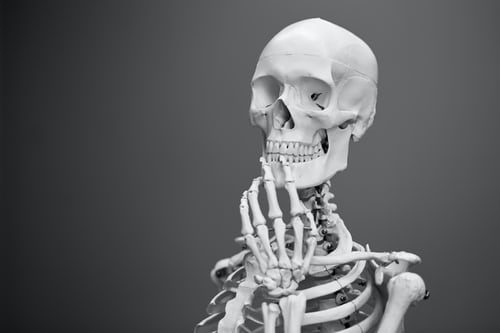
“Having Healthy strong bones for life, is possible and starts with what you are doing right now.'”
Tweet

